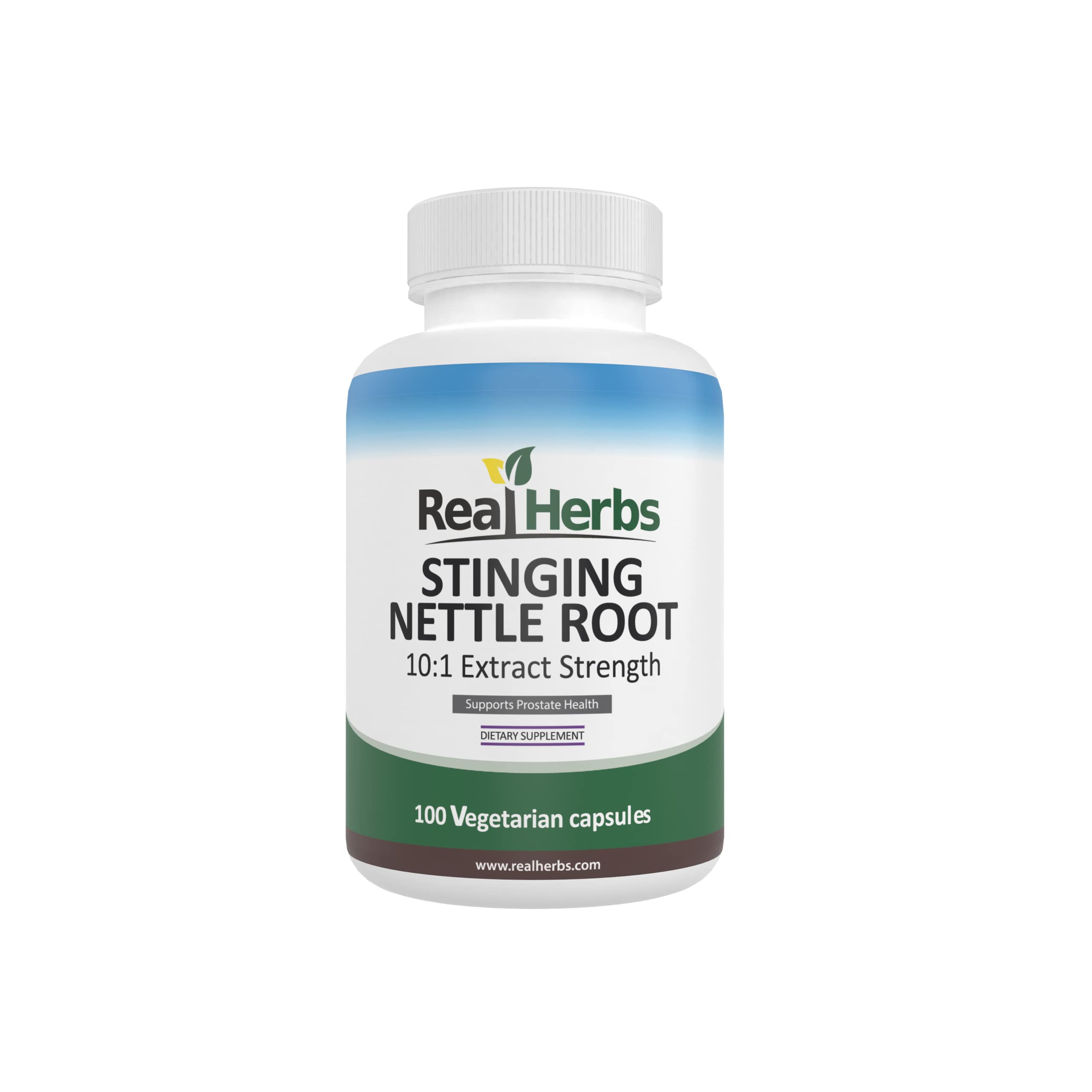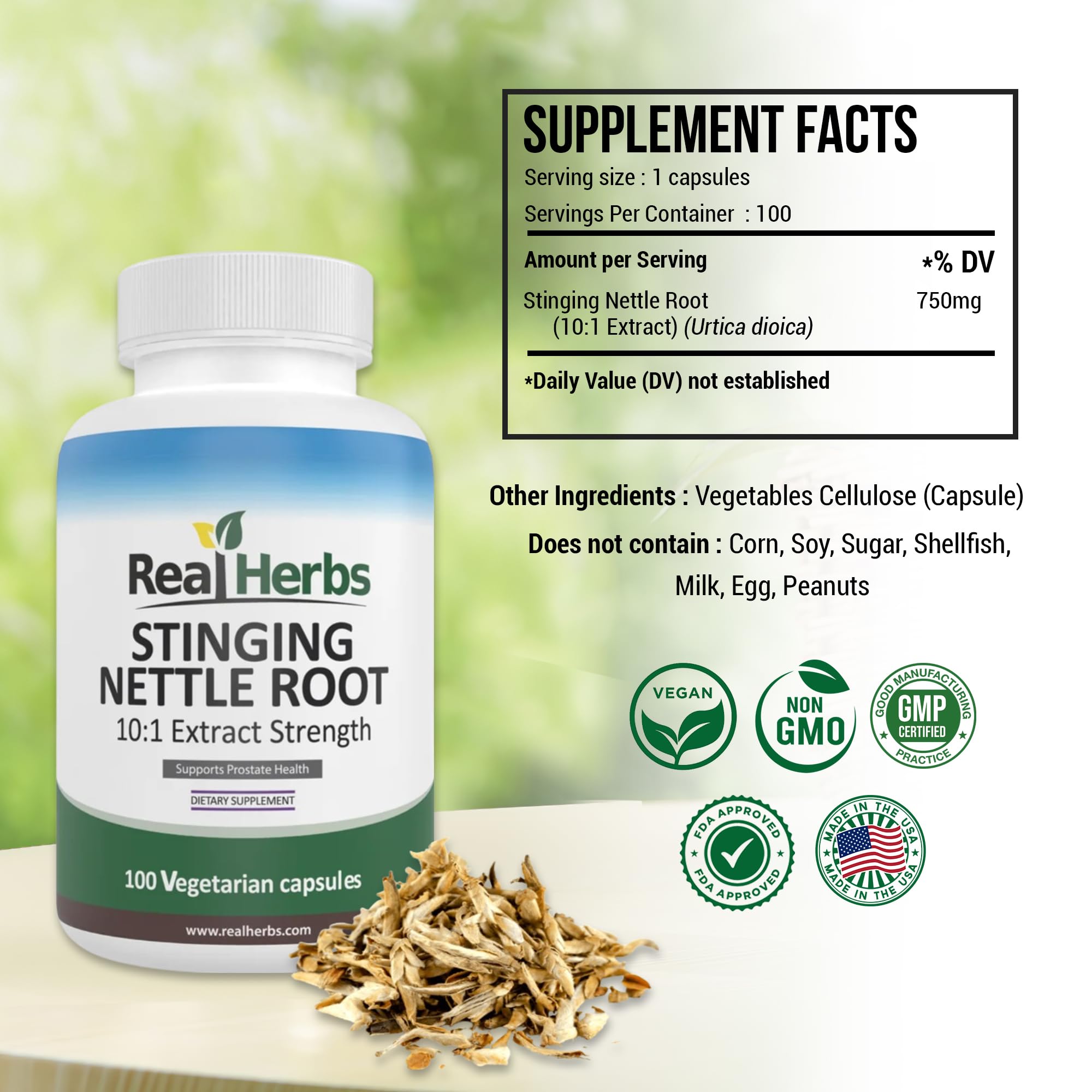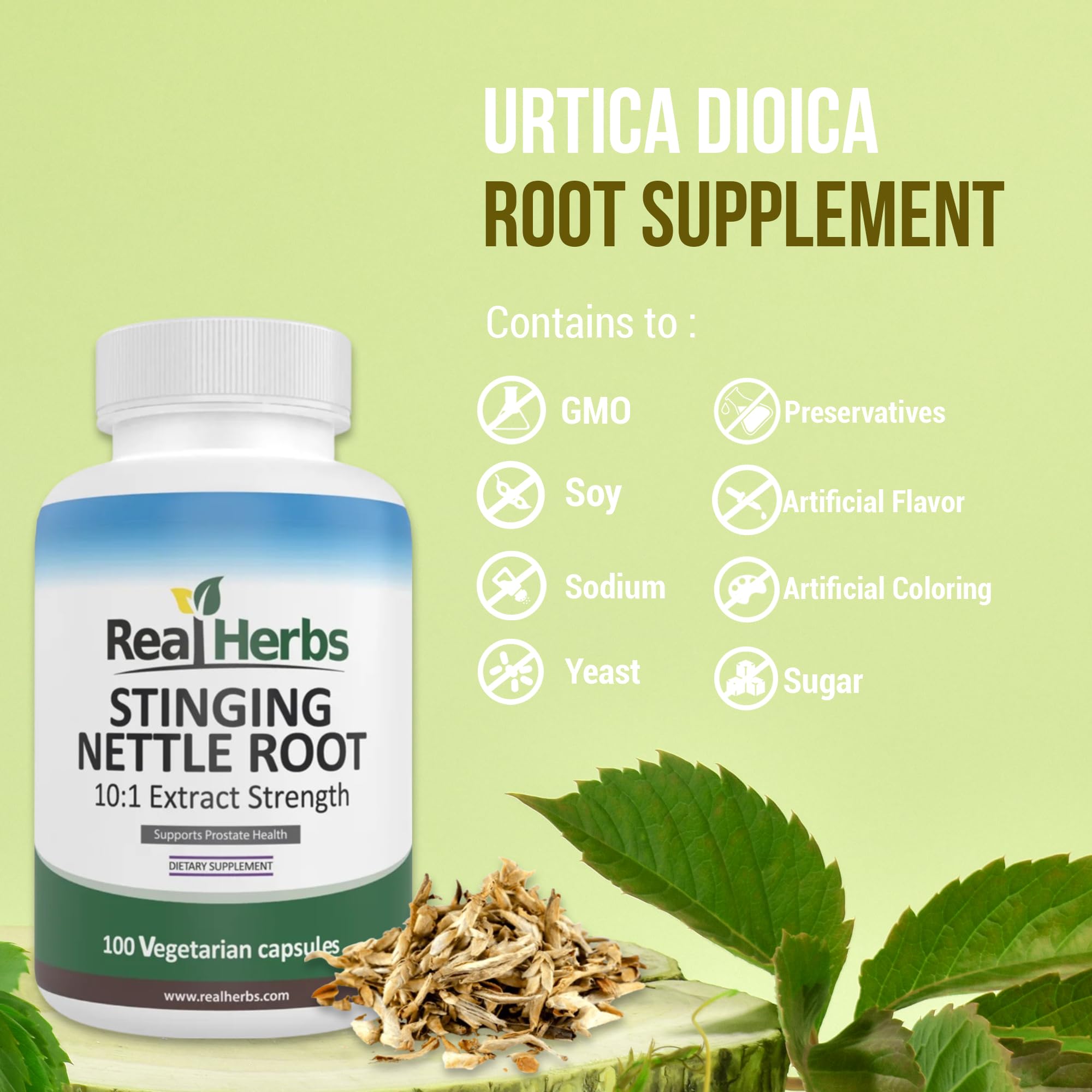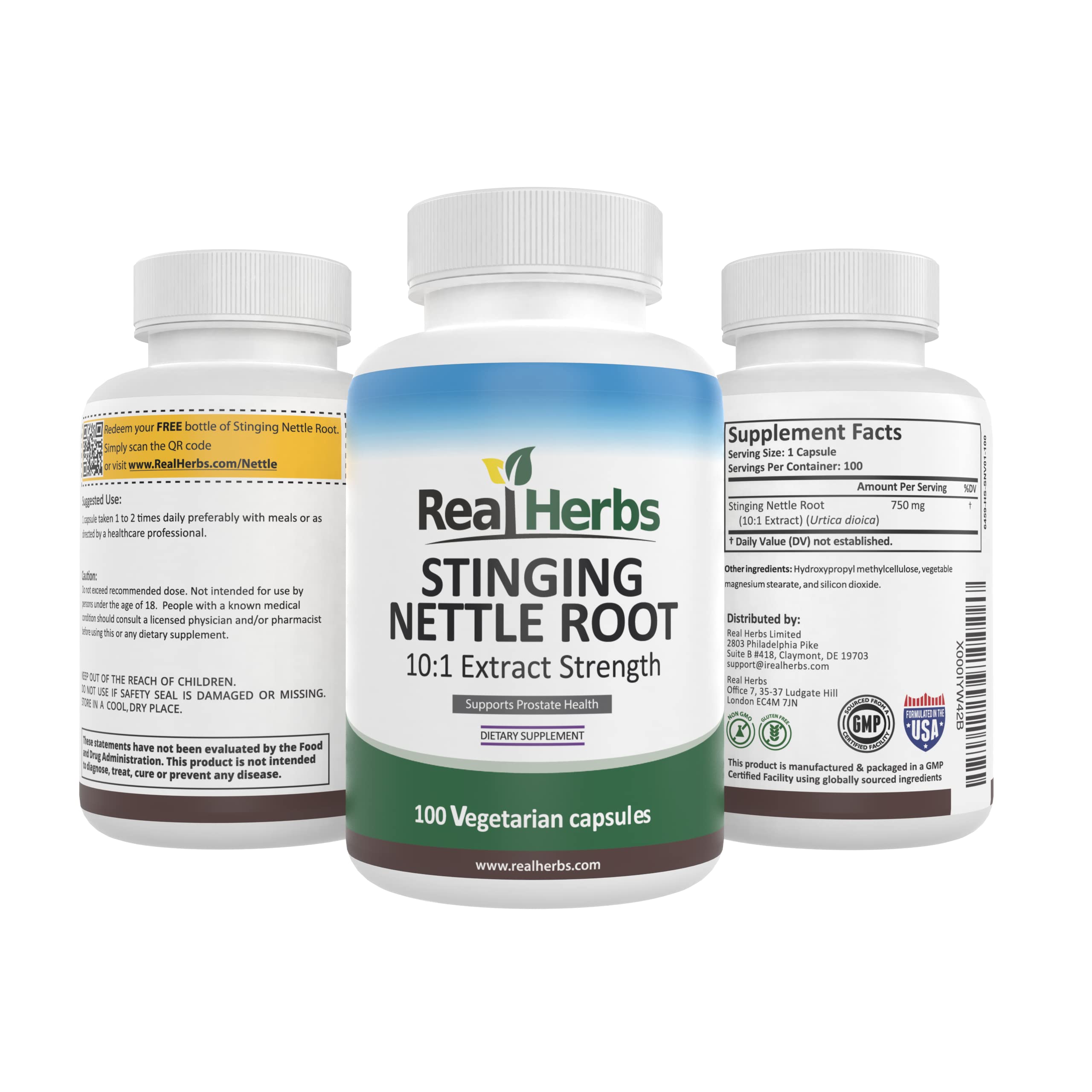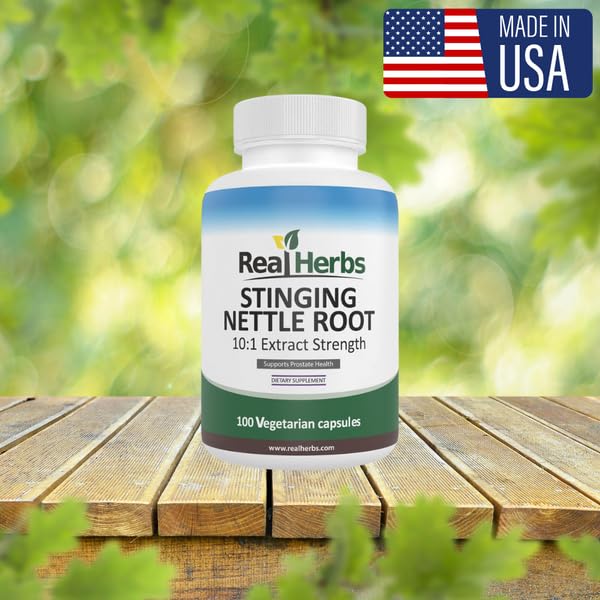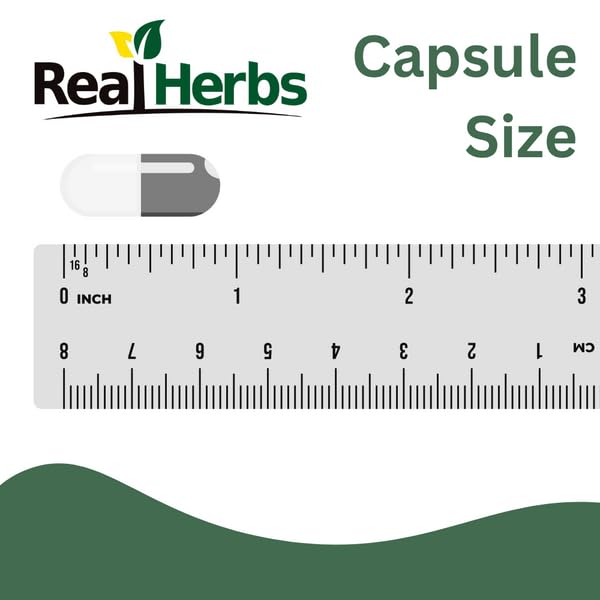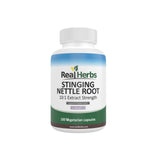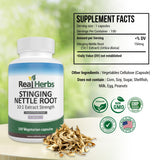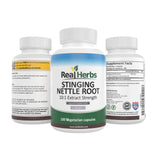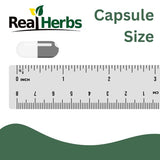Nettle Leaf vs Nettle Root: What Are the Differences?
Nettle Leaf vs. Nettle Root:
Unveiling the Distinct Powers of Urtica dioica
Understanding the unique benefits and applications of this versatile herb.
The Two Faces of Stinging Nettle: A Natural Solution
Stinging nettle (Urtica dioica) has been revered in traditional medicine for centuries, a versatile herb with a surprising range of applications. While often spoken of as a singular entity, this remarkable plant offers distinct benefits depending on which part is utilized: the vibrant leaves or the sturdy roots. Understanding the unique properties and mechanisms of nettle leaf versus nettle root is crucial for targeting specific health concerns and maximizing its therapeutic potential.
This article delves into the differences between these two potent parts of the stinging nettle plant, exploring their unique chemical compositions, traditional uses, scientific backing, and optimal applications.

Scientific Mechanism of Action: How Nettle Works
Both nettle leaf and root exert their effects through a complex interplay of bioactive compounds. These include flavonoids, phenolic acids, lignans, sterols, triterpenes, and various vitamins and minerals . While many compounds are present in both, their concentrations and the presence of specific compounds differ, leading to varied therapeutic actions.
- Nettle Leaf: The leaves are particularly rich in polyphenols like quercetin and kaempferol, phenolic acids such as caffeic acid and chlorogenic acid, and significant amounts of vitamins (A, C, K, B vitamins) and minerals (calcium, iron, magnesium, potassium, silica) . These compounds contribute to its potent anti-inflammatory and antihistamine properties. The anti-inflammatory action is thought to involve the inhibition of inflammatory mediators like cyclooxygenase and prostaglandins, as well as cytokines like IL-1 and IL-2 . Its antihistamine effect is believed to stem from its ability to bind with histamine receptors and reduce histamine production, making it a natural choice for allergic reactions .
- Nettle Root: The root, on the other hand, contains unique compounds, including lignans (e.g., secoisolariciresinol), phenolic components, and plant sterols like beta-sitosterol . These compounds are believed to be responsible for its specific affinity for prostate health. The mechanism for benign prostatic hyperplasia (BPH) involves the root's impact on androgens and their transport proteins (sex hormone-binding globulin, SHBG), which can reduce the effect of testosterone on prostate cells. Nettle root's phenolic compounds may also lower the activity of certain enzymes in the prostate's cell walls .
Benefits Backed by Data: Tailored Therapeutic Applications
The distinct chemical profiles translate into different primary therapeutic applications for nettle leaf and nettle root.
Nettle Leaf Benefits:
Primarily known for its anti-inflammatory and antihistamine effects, nettle leaf is often utilized for:
- Allergies and Hay Fever: Its natural antihistamine properties can help alleviate symptoms like sneezing, runny nose, and itchy eyes .
- Inflammation and Pain: It may help reduce inflammation associated with conditions like arthritis, with some studies showing reduced pain in human participants .
- Urinary Tract Health: As a diuretic, nettle leaf can support kidney function and help flush the urinary tract, potentially aiding in the treatment of urinary tract infections and preventing kidney stone formation , .
- Blood Sugar Management: Some studies suggest nettle leaf may help lower blood sugar levels .
- Nutrient Support: Rich in vitamins and minerals, it acts as a nourishing tonic , .
Nettle Root Benefits:
The root is primarily recognized for its support of male health:
- Benign Prostatic Hyperplasia (BPH): Nettle root is a common traditional and modern treatment for the symptoms of an enlarged prostate, such as frequent urination, painful urination, and difficulty urinating , .
- Joint Health: While less emphasized than the leaf for general inflammation, nettle root may also contribute to joint health support .
- Hair Health: Historically, nettle root has been used in formulations aimed at hair growth and combating hair loss, though more scientific research is needed in this area.
Comparison Table: Nettle Leaf vs. Nettle Root
Comparisons: Nettle vs. Alternatives
When considering nettle leaf and nettle root, it's helpful to understand how they compare to conventional treatments or other natural alternatives.
- Nettle Leaf vs. Antihistamines (for allergies): Nettle leaf offers a natural approach to allergy relief, often with fewer side effects than conventional antihistamines, which can cause drowsiness. However, severe allergic reactions may still require pharmaceutical intervention.
- Nettle Root vs. Pharmaceutical BPH Medications: Nettle root, particularly in combination with other herbs like saw palmetto, has shown comparable efficacy to some prescription medications (e.g., finasteride) for improving BPH symptoms, often with better tolerability . It's crucial to consult a healthcare professional for diagnosis and treatment of BPH.
Usage Instructions: Dosage, Form, Frequency
The appropriate dosage and form of nettle vary depending on the part used and the condition being addressed.
Nettle Leaf:
- Tea: Steep 1-2 teaspoons of dried nettle leaf in hot water for 10-15 minutes, 2-4 cups daily.
- Capsules/Tablets: Typically 300-600 mg of dried leaf extract, taken 1-3 times daily, especially during allergy season , .
- Tinctures/Extracts: Follow product-specific instructions.
Nettle Root:
- Capsules/Tablets: Common dosages for BPH range from 300-360 mg of extract, taken in divided doses daily for several months .
- Tinctures/Extracts: Follow product-specific instructions.
It is always advisable to start with a lower dose and gradually increase it, monitoring your body's response. Consistency is key for optimal results with herbal remedies.
Safety and Side Effects
Stinging nettle is generally considered safe for most people when used appropriately. However, some side effects and precautions apply:
- Initial Contact (fresh plant): The fresh plant can cause a stinging, itchy, or burning sensation upon contact due to histamine and other compounds in its hairs. This reaction typically subsides quickly. Dried or cooked nettle does not cause this effect.
- Digestive Upset: Mild stomach upset or diarrhea can occur in some individuals .
- Diuretic Effect: As a diuretic, nettle can increase urine flow. Individuals with kidney problems or those taking diuretic medications should consult a healthcare provider .
- Blood Pressure: Nettle may lower blood pressure. Individuals on blood pressure medications should monitor their blood pressure closely .
- Blood Sugar: Nettle may affect blood sugar levels. Diabetics should monitor their blood sugar and consult their doctor .
- Pregnancy and Breastfeeding: Pregnant or breastfeeding individuals should avoid nettle due to its diuretic properties and potential impact on hormonal balance .
- Drug Interactions: Nettle may interact with blood thinners, blood pressure medications, diabetes medications, and NSAIDs. Always consult a healthcare professional before combining nettle with prescription drugs.
Combination Options with Synergistic Herbs
Both nettle leaf and root can be combined with other herbs to enhance their effects for specific conditions.
- For Allergies: Nettle leaf can be synergistically combined with quercetin, butterbur, or bromelain for enhanced allergy relief .
- For Prostate Health: Nettle root is frequently combined with saw palmetto, pygeum, or pumpkin seed oil for comprehensive prostate support .
- For Joint Health: Nettle leaf can be paired with turmeric, ginger, or boswellia for amplified anti-inflammatory benefits.
Conclusion: Harnessing the Power of Nettle
Stinging nettle is a powerhouse of natural compounds, with its leaf and root offering distinct yet complementary benefits. Nettle leaf stands out for its anti-inflammatory and antihistamine properties, making it an excellent natural ally for allergies, arthritis, and general well-being. Nettle root, on the other hand, is a cornerstone for male prostate health, offering targeted support for BPH symptoms. By understanding these differences and applying them judiciously, you can effectively harness the multifaceted therapeutic potential of Urtica dioica.
Ready to Experience the Natural Difference?
Discover the natural difference of our premium Nettle Root extract. Crafted with purity and potency in mind, our product is designed to support your health journey naturally.
All our products are backed by our 100-Day Money-Back Guarantee!
"My husband's prostate issues have significantly improved with the Nettle Root. It's been a game-changer for his comfort." - David R.
Scientific Credibility & Citations
- Škvarla, J., et al. (2023). Wild Stinging Nettle (*Urtica dioica* L.) Leaves and Roots Chemical Composition and Phenols Extraction. *Molecules*, 28(2), 652. PMID: 9864842
- Chrubasik, S., et al. (2007). Evidence for the effectiveness of a herbal drug combination for the treatment of osteoarthritis of the knee. *Phytomedicine*, 14(9), 597-603. PMID: 17570643 (Note: This study refers to topical nettle application for arthritis pain relief).
- Konrad, L., et al. (2000). A review of the *Urtica dioica* (stinging nettle) for benign prostatic hyperplasia. *Journal of Herbal Pharmacotherapy*, 1(3), 1-14. PMID: 11116262
- Kianbakht, S., et al. (2013). Evaluation of the effects of nettle (Urtica dioica) on metabolic indices and oxidative stress in patients with type 2 diabetes mellitus: A randomized controlled trial. *Iranian Journal of Diabetes and Obesity*, 5(2), 85-91. PMID: 24707204 (Human study on nettle leaf and blood sugar).
- Ghorbanpur, A., et al. (2020). *Urtica dioica* L. (Stinging Nettle) as a multi-purpose medicinal plant: A review. *Pharmacognosy Reviews*, 14(27), 40-51. PMID: 32677846
- University of Rochester Medical Center. (n.d.). *Nettle*. Health Encyclopedia. https://www.urmc.rochester.edu/encyclopedia/content?contenttypeid=19&contentid=Nettle
- Bhaskar, P., et al. (2016). *Urtica dioica* L.: A comprehensive review on its ethnopharmacology, phytochemistry, and pharmacology. *Asian Pacific Journal of Tropical Biomedicine*, 6(10), 827-835. PMID: 27956040
- Wyndly. (2025). *Stinging Nettle: A Natural Remedy for Allergies?*. https://www.wyndly.com/blogs/learn/stinging-nettle-for-allergies (Mentions human studies on allergic rhinitis).
- Examine.com. (2024). *Stinging Nettle benefits, dosage, and side effects*. https://examine.com/supplements/stinging-nettle/
- Therascience. (n.d.). *Nettle: benefits, origin, sources and properties*. https://www.therascience.com/en_int/nos-actifs/plantes-et-champignons/nettle
- VDU. (2023). *Wild Stinging Nettle (Urtica dioica L.) Leaves and Roots Chemical Composition and Phenols Extraction*. https://www.vdu.lt/cris/bitstreams/7d6a666c-d59a-47ae-8656-e9541f907672/download
Author Profile: Jessica Johnson, Herbal Science Researcher
With a background in botanical medicine and a passion for natural healing, Jessica Johnson brings years of dedicated research and practical experience to the field of herbal science. Her work focuses on understanding the complex biochemistry of medicinal plants and translating scientific findings into accessible, actionable health information. Jessica is committed to promoting evidence-based natural solutions for optimal well-being.
Disclaimer: The information provided in this article is for educational purposes only and is not intended as medical advice. Always consult with a qualified healthcare professional before making any decisions about your health or starting any new supplement regimen. Individual results may vary.

